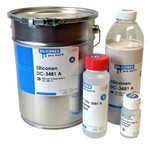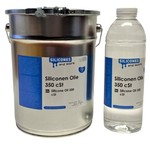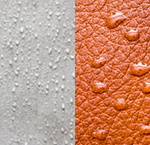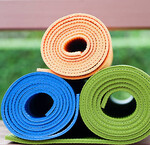Silicone, casting rubber
Choose the best silicone casting rubber or kneadable rubber that fits your application!
* Condensation curing Silicone: Ideal for making a simple (casting) mold cost-effectively.
* Addition curing Silicone / Platinum Silicone: These are considerably m
 Condensation Curing
Condensation Curing
 Addition Curing
Addition Curing
 Silicone Oil
Silicone Oil
 LSR and HTV silicone
LSR and HTV silicone
 Malleable Silicone
Malleable Silicone
 Water-repellent silicone solutions
Water-repellent silicone solutions
 Dyes
Dyes
 Auxiliaries
Auxiliaries
 Silicone raw materials
Silicone raw materials
 Release agents
Release agents
 Tools / Machines
Tools / Machines
 Safety / PPE
Safety / PPE
 Primers for silicones
Primers for silicones
 Silicone sealant / Adhesive silicone
Silicone sealant / Adhesive silicone
 Silicone foam
Silicone foam
 RTV 2 Custom silicone
RTV 2 Custom silicone
 Silicone emulsions
Silicone emulsions
 Condensation Curing
Condensation Curing Addition Curing
Addition Curing Silicone Oil
Silicone Oil LSR and HTV silicone
LSR and HTV silicone Malleable Silicone
Malleable Silicone Water-repellent silicone solutions
Water-repellent silicone solutions Dyes
Dyes Auxiliaries
Auxiliaries Silicone raw materials
Silicone raw materials Release agents
Release agents Tools / Machines
Tools / Machines Safety / PPE
Safety / PPE Primers for silicones
Primers for silicones Silicone sealant / Adhesive silicone
Silicone sealant / Adhesive silicone Silicone foam
Silicone foam RTV 2 Custom silicone
RTV 2 Custom silicone Silicone emulsions
Silicone emulsions

What is Cast Rubber?
Casting rubber refers to a castable material that exhibits the properties of rubber after curing. There are various artificial materials with this property, such as certain polyurethanes and epoxies. However, when we talk about casting rubber, we usually mean silicone rubber. Silicones as casting rubber are an excellent alternative to natural casting rubber or natural rubber. They retain their rubber-like properties at both low and high temperatures. In addition, silicones last much longer than traditional rubber and are more resistant to chemicals. With us, you will find an extensive range of silicones that are suitable as casting rubber. These silicones can be divided into two categories based on their chemical properties: condensation-hardening silicones (also called tin-hardening silicones) and addition-hardening silicones (also called platinum-hardening silicones).
What is the difference between addition and condensation silicones?
Simple explanation:
- Condensation silicone : These silicones “sweat” out a little of their own material (tin salts) over time. This causes condensation silicones to shrink in the long term, usually by about 1% per year. Please note: condensation silicones are not food safe. In general, they are cheaper than addition silicones and easier to process.
- Addition silicone : These silicones show virtually no shrinkage. However, in a liquid state they can still react with certain materials or substances, which can cause poisoning of the silicone. Substances such as sulphur, nitrogen, amino compounds and metal salts can play a role in this. If you are unsure whether your material reacts well to the silicone, first perform a small test. Addition silicones generally last longer and are slightly more expensive.
Extensive Explanation of Condensation and Addition Silicones
The chemical difference between condensation and addition silicones lies in the way polymerization occurs. Let's take a closer look:
- Condensation Silicone :
- Condensation silicones form long chains during the curing process. Some of the material condenses (separates), resulting in a decrease in the total volume of the silicone. This causes condensation silicones to shrink more than addition silicones.
- These silicones release tin salts during curing. Unfortunately, these salts are harmful to health, which is why condensation silicone molds are not suitable as food molds.
- Condensation silicones continue to react and form chains after mixing the A and B components. This means that they shrink and become more brittle over the years. The advantage is that they also adhere to new condensation silicones when applied to an old silicone casting. With two-part condensation silicone molds, it is essential to maintain a good separation between the two layers during the casting of the second part to prevent unwanted adhesion.
- These silicones need moisture to harden. They get this moisture from themselves as well as from the environment or air. That is why the hardening process is faster at high humidity. It is essential to seal condensation silicone well after use, otherwise the moisture evaporates.
- Addition Silicone :
- Addition silicones show virtually no shrinkage. They form long chains without releasing substances during curing.
- In liquid state, however, addition silicones can still react with certain materials or substances, which can cause poisoning of the silicone. Substances such as sulphur, nitrogen, amino compounds and metal salts play a role in this.
- To force complete polymerization and avoid unreacted material, it is recommended to post-cure addition silicones after curing (place them in an oven at 80-100°C for an extended period of time).
- o Addition silicones require heat for curing. In general, they cure faster at higher temperatures. However, at low temperatures (even noticeably below 18°C), many addition silicones may not cure well or at all. Sometimes addition silicones are even used slightly cold to extend the processing time. Roughly speaking, the following often applies: For every 10°C higher temperature, the processing time and the curing time halve. For every 10°C lower temperature, the processing time and curing time double. Curing at elevated temperatures can, however, affect the crosslinking to some extent and often results in a harder and stiffer silicone end product.
- Resistance to Chemicals and Pollution :
- After curing, condensation silicones are less resistant to chemicals and resins than addition silicones. However, during the curing process, condensation silicones are more resistant to contamination.
- Addition silicones can lose their curing properties when contaminated by substances such as tin salts (found in condensation silicones), various adhesives, phosphorus, arsenic, nitrogen, 1-component silicones and sulphur (even sulphur-containing latex gloves). If in doubt about the compatibility of the chosen silicone with other materials, always perform a small test on a non-critical part of the original.
- Mixing ratios :
- With condensation silicones, the mixing ratios are less critical. A slightly too large amount of catalyst accelerates the curing process and shortens the processing time. However, too much excess can have negative effects, such as reduced strength of the silicone. Too little catalyst results in very slow curing.
- Addition silicones, on the other hand, must be mixed very precisely. Even small deviations can cause the silicone to no longer harden. In the best case, this can still be remedied by applying a “post-curing” process (placing the silicone in an oven at 80-100°C for a considerable time).
Condensation Hardening Silicone:
- Condensation 20 Starter Kit :
- A complete starter kit with the popular Condensation 20 silicone and more.
- Ideal for soap molds, candle molds or concrete molds.
- Silicone Condensation 20 Universal :
- Flexible, strong and universally applicable.
- White in colour, good fluidity.
- Shore (A) hardness of 23-28.
- Silicone Condensation 20 for PU and Epoxy :
- Flexible, strong and resistant to polyurethane and epoxy.
- White in colour, good fluidity.
- Shore (A) hardness of 23-26.
- Silicone Condensation 20 for Polyester :
- Flexible, strong and resistant to polyester.
- White in colour, good fluidity.
- Shore (A) hardness of 23-26.
- Silicone Condensation DC 3481 R :
- Flexible, strong and resistant to resins such as polyurethane and polyester.
- Beige in color, good fluidity.
- Shore (A) hardness of 18-21.
- Silicone Condensation DC 3481 Fast :
- Flexible, strong and fast curing.
- Beige in color, good fluidity.
- Shore (A) hardness of 23.
- Silicone Condensation HT 60 Set - Hard :
- Very hard and heat resistant up to 380°C.
- Red in color, liquid.
- Shore (A) hardness of 60.
- Elastosil M 4514 :
- Very good fluidity and self-venting.
- Low Shore A hardness (approximately 25).
- Excellent tear strength, high elongation and flexibility.
- Excellent chemical resistance to attack by polyester and polyurethane resins.
Addition Hardening Silicone
- Silicone Addition Gel 840 Clear :
- Silicone gel, specially designed for potting electronics.
- Ideal when the measuring pins must remain accessible, but must be sealed against moisture.
- Processing time: 80 minutes.
- Curing time: 24 hours.
- Silicone Addition Clear 0 Super Soft :
- Very soft and crystal clear.
- Suitable for casting electronic and optical elements.
- Basically a firm gel.
- Processing time: 50 minutes.
- Curing time: 3 hours.
- Silicone Addition Clear 0 Super Soft Fast :
- Very soft, crystal clear and fast curing.
- Suitable for casting electronic and optical elements.
- Basically a firm gel.
- Processing time: 30 minutes.
- Curing time: 2 hours.
- SkinClay SFX Silicone :
- Professional silicone for modeling wounds and special effects on the skin.
- Very soft, easy to apply and shape.
- Processing time: 2-4 minutes.
- Curing time: 8-10 minutes.
- Silicone Addition Clear 5 :
- Very soft and crystal clear.
- Suitable for casting electronic and optical elements.
- Processing time: 30 minutes.
- Curing time: 2 hours.
- Silicone Addition Colorless 5 :
- Very soft, stretchy silicone.
- Ideal for masks, delicate shapes, props and detailed candle moulds.
- Processing time: 30 minutes.
- Curing time: 2 hours.
- Silicone Addition Pink 10 :
- Soft, flexible silicone, suitable for fragile objects, candles and aggressive resins.
- Processing time: 40 minutes.
- Curing time: 4 hours.
- Silicone Addition Transparent 15 Normal :
- Soft, skin-friendly and food safe.
- Suitable for prototyping, stamps (tamping industry), prostheses and podiatry.
- Processing time: 60 minutes.
- Curing time: 6 hours.
- Silicone Addition Transparent 15 Fast :
- Soft, skin-friendly and food safe.
- Suitable for prostheses, podiatry and prototyping.
- Processing time: 2 minutes.
- Curing time: 15 minutes.
- Silicone Culinary :
- Ideal for making a mold for all your culinary creations.
- Food safe and TÜV certified.
- Specially developed for the catering industry.
- Processing time: 60 minutes.
- Curing time: 6 hours.
- Silicone Addition Clear 25 :
- Medium hard, crystal clear silicone.
- Suitable for casting LEDs, optical elements, imitation of water and windows for model making.
- Processing time: 120 minutes.
- Curing time: 20 hours.
- Silicone Addition Clear 25 Fast :
- Medium hard, crystal clear silicone.
- Suitable for casting LEDs, optical elements, imitation of water and windows for model making.
- Processing time: 30 minutes.
- Curing time: 4 hours.
- Silicone Addition Transparent 25 Normal :
- Medium hard and strong silicone.
- Suitable for prototyping, stamps (tamping industry), prostheses and podiatry.
- Processing time: 60 minutes.
- Curing time: 6 hours.
- Silicone Addition Yellow 25 :
- Medium hard silicone.
- Good resistance to aggressive casting resins such as epoxy, polyurethane and polyester.
- Processing time: 60 minutes.
- Curing time: 6 hours.
- Silicone Elastosil M 4601 A/B :
- Good resistance to aggressive casting resins, especially polyurethane.
- Medium hard silicone for a firm dry mold.
- Can withstand higher temperatures for a short time.
- Processing time: 90 minutes.
- Curing time: 12 hours.
- Silicone Addition Green 30 :
- Relatively hard silicone for sturdy molds.
- Good resistance to aggressive casting resins such as epoxy, polyurethane and polyester.
- Processing time: 60 minutes.
- Curing time: 6 hours.
- Silicone Addition Transparent 40 Normal :
- Hard and strong silicone.
- Suitable for prototyping, tampon industry (stamps), prosthetics and podiatry.
- Processing time: 60 minutes.
- Curing time: 6 hours.
- Silicone Addition Transparent 40 Fast :
- Hard and strong silicone.
- Suitable for prototyping, tampon industry (stamps), prosthetics and podiatry.
- Processing time: 2 minutes.
- Curing time: 15 minutes.
- Silicone Addition Colorless 50 :
- Relatively high hardness for silicone rubber.
- Low shrinkage of <0.1%.
- Good fluidity and self-venting.
- Suitable for hard flexible molds.
- Processing time: 30 minutes.
- Curing time: 3 hours.
- Plastic Culinary Fast :
- Very fast, skin and food friendly kneadable silicone.
- Easy to mix and process by hand.
- Ready to use after just 10 minutes.
- Processing time: 100 seconds.
- Curing time: 10 minutes

